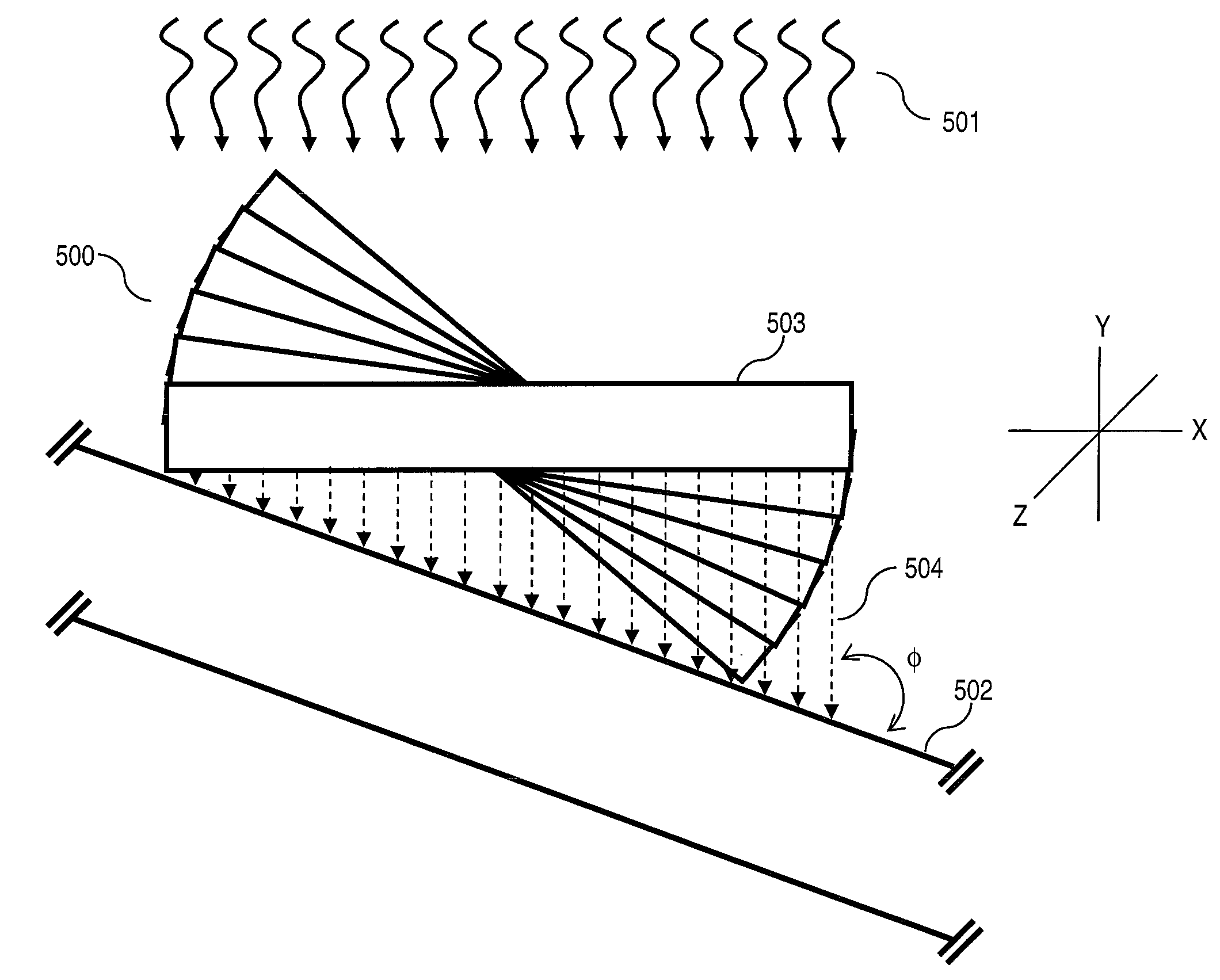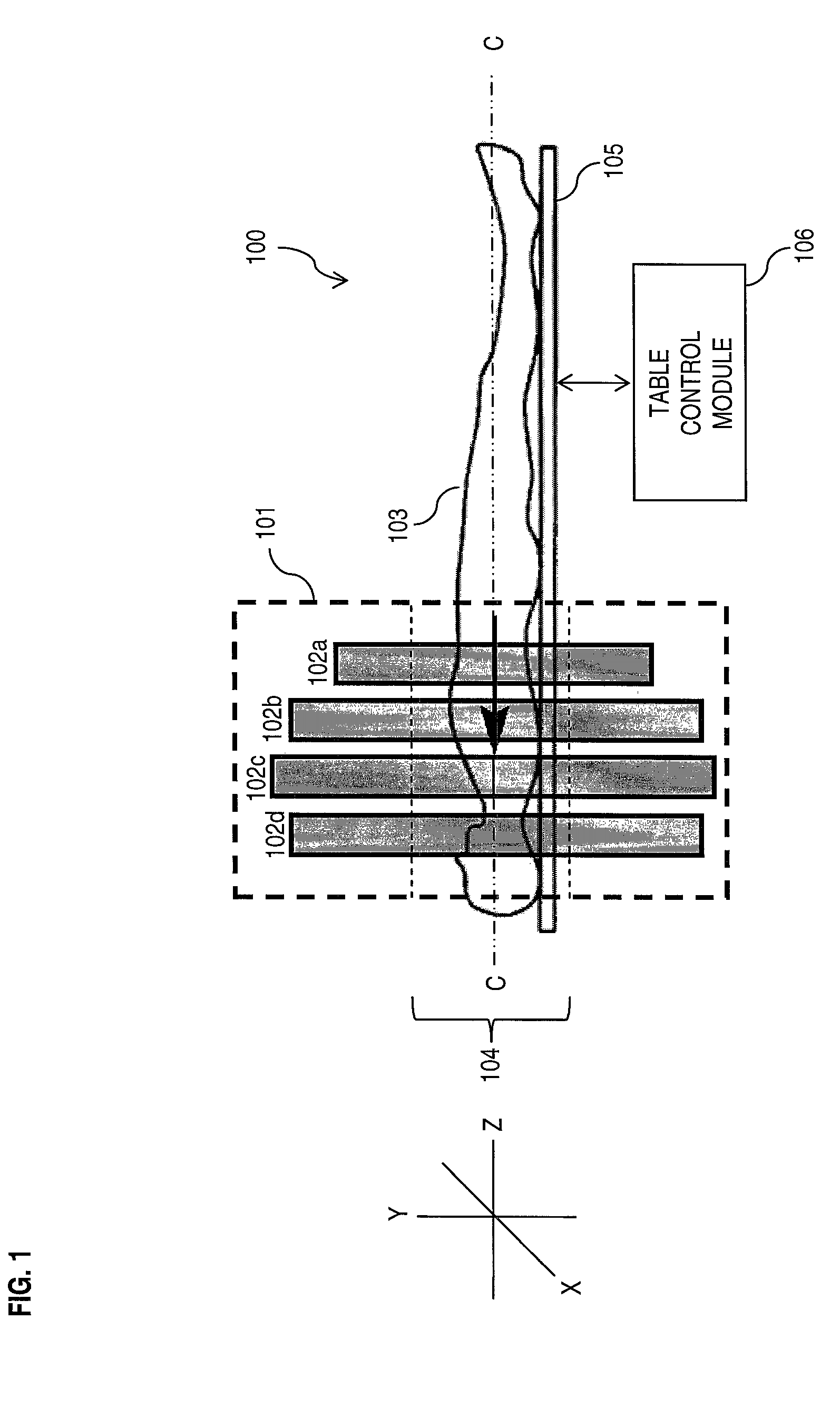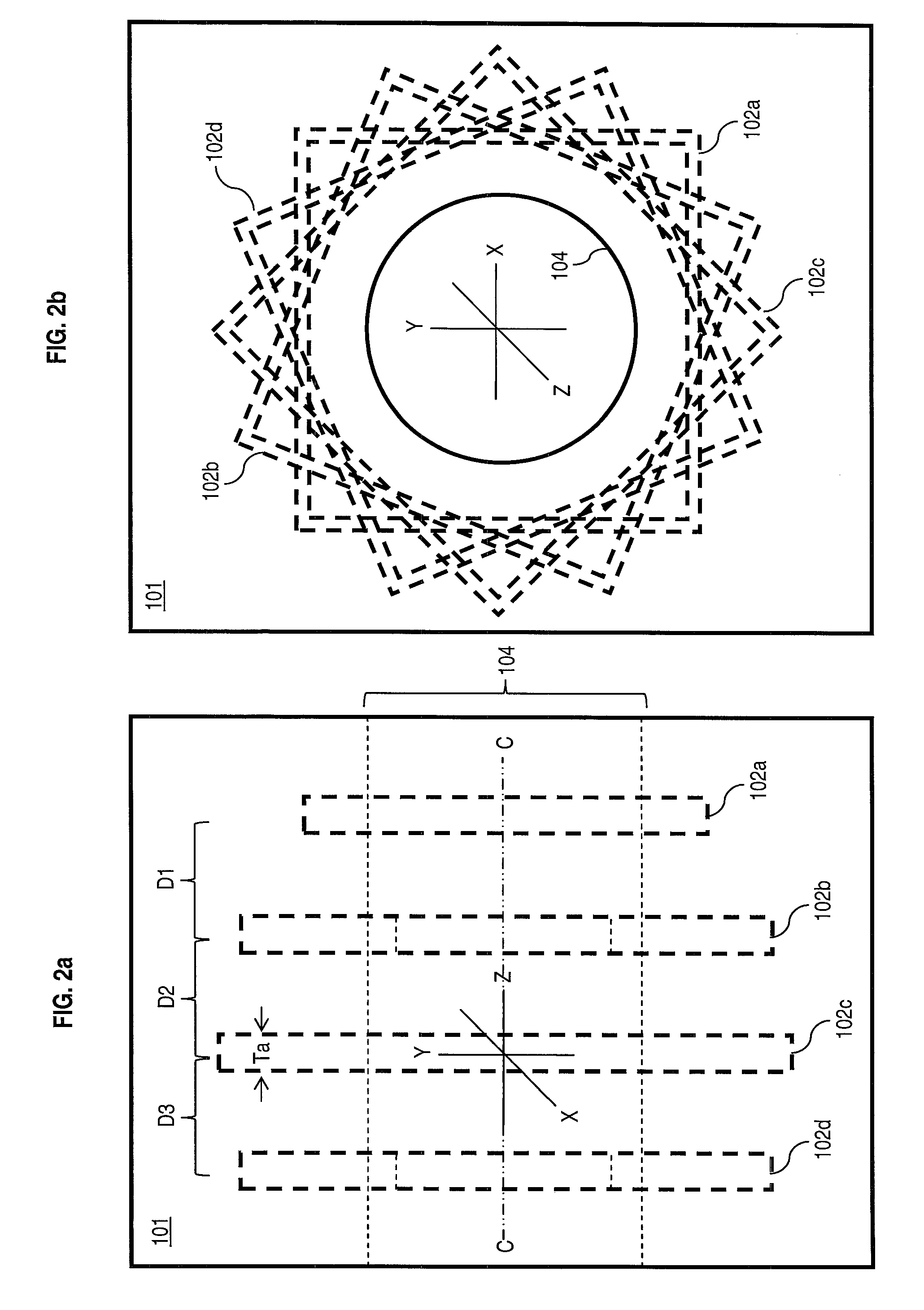Non-rotating transaxial radionuclide imaging
a radionuclide and transaxial technology, applied in the field of radionuclide imaging, can solve the problem that the gantry is a relatively expensive subsystem of the diagnostic tool, and achieve the effect of reducing cost and efficient manufacturing
- Summary
- Abstract
- Description
- Claims
- Application Information
AI Technical Summary
Benefits of technology
Problems solved by technology
Method used
Image
Examples
Embodiment Construction
[0026]The present invention addresses the need for nuclear medical imaging devices that can be manufactured efficiently and at reduced cost. Embodiments of the present invention achieve that objective by providing collimators that can be used in various types of nuclear medical imaging devices, such as those employed in SPECT scanning, without the necessity of causing relative rotation between the detectors and patient. In this way, the use of expensive gantry systems to support and rotate heavy detectors, such as gamma cameras, around the patient is avoided. Thus, in accordance with embodiments of the present invention, effective and accurate imaging is performed simply by causing linear movement of the patient along a longitudinal axis, without causing relative rotation between the detectors and patient.
[0027]In accordance with embodiments of the present invention, a collimator is provided comprising a plurality of stacked parallel collimating segments, each containing a plurality...
PUM
 Login to View More
Login to View More Abstract
Description
Claims
Application Information
 Login to View More
Login to View More - R&D
- Intellectual Property
- Life Sciences
- Materials
- Tech Scout
- Unparalleled Data Quality
- Higher Quality Content
- 60% Fewer Hallucinations
Browse by: Latest US Patents, China's latest patents, Technical Efficacy Thesaurus, Application Domain, Technology Topic, Popular Technical Reports.
© 2025 PatSnap. All rights reserved.Legal|Privacy policy|Modern Slavery Act Transparency Statement|Sitemap|About US| Contact US: help@patsnap.com



